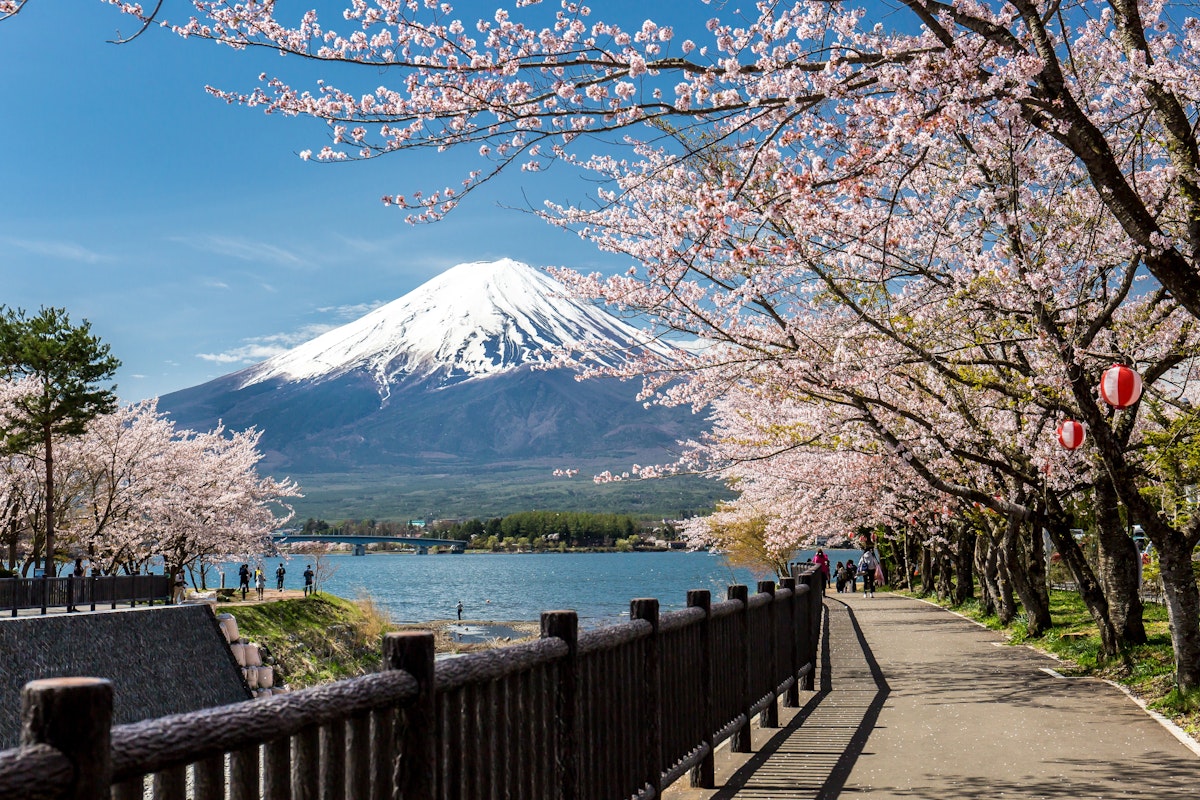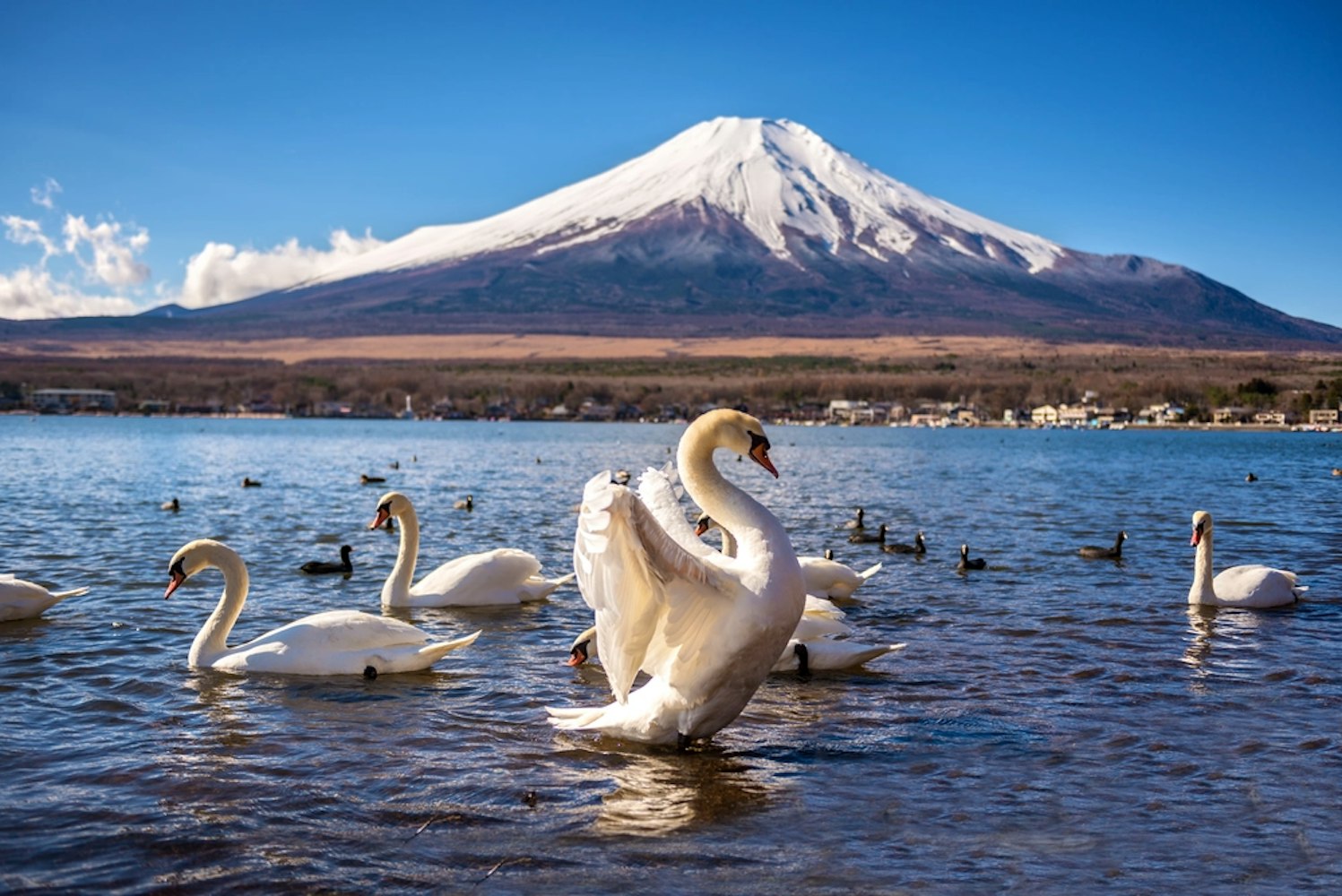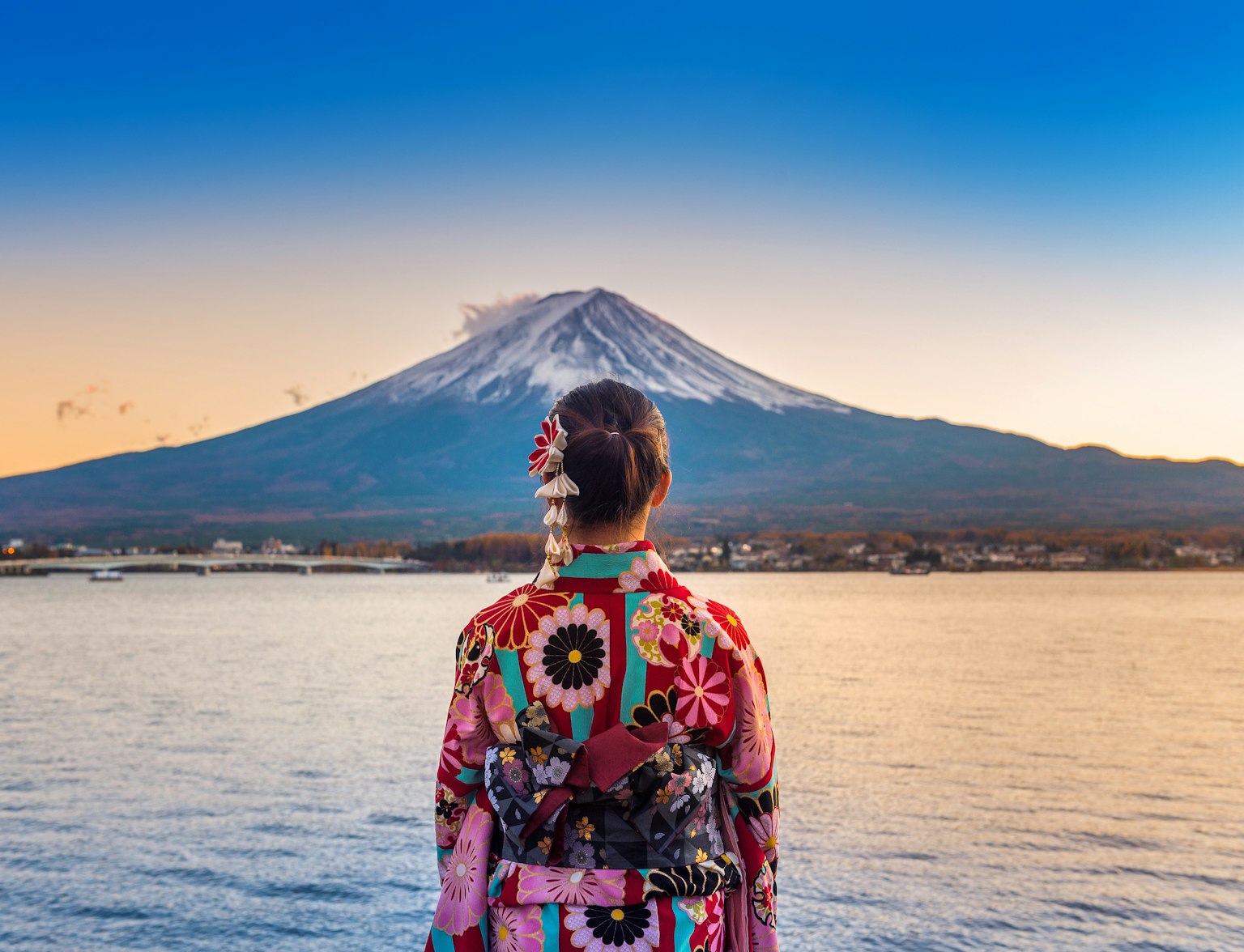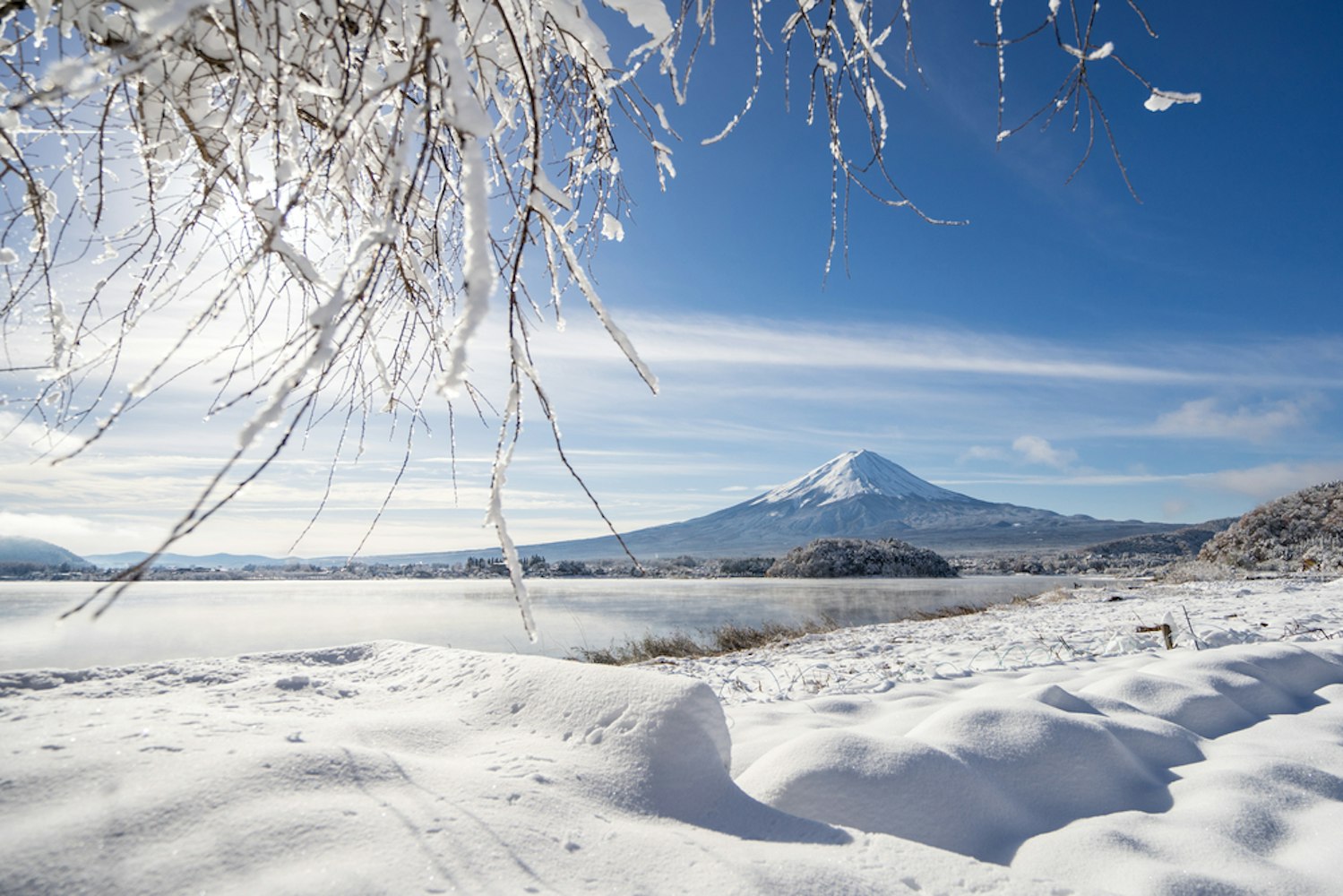

富士山は地元の人々によって「富士さん」と呼ばれ、日本の象徴的な存在であり、冒険者や自然愛好家を世界中で引き付ける美しい自然の驚異です。この記事では、富士山の豊かな歴史を掘り下げ、神聖な山に住む素晴らしい野生動物を明らかにし、この壮大な風景を形成するユニークな気候を探求します。
日本で「富士さん」として知られる富士山は、単なる地理的なランドマークではなく、国家の文化的および歴史的な布に深く埋め込まれたシンボルです。この壮大な成層火山は、3776メートル(12389フィート)の高さを誇り、日本人の心に特別な場所を占め、その威容と同じくらい魅力的な歴史を持っています。
富士山の歴史は、その成層火山としての形成から数百万年前に始まります。テクトニック活動と火山の噴火の絶え間ない力によって生まれ、次第に現在の壮大さにまで成長しました。時が経つにつれて、溶岩、灰、火山岩の層が、今日我々が認識するアイコニックな形を形成しました。
富士山の重要性は、その地質学的起源を超えています。何世紀にもわたり、芸術家、詩人、巡礼者にとってインスピレーションの源となってきました。日本では「聖なる山」としてしばしば言及され、その姿は無数の芸術作品に不朽の存在となっています。
山の美しさと対称性は、伝統的な日本の絵画、浮世絵、詩に描かれる原因となっています。
何世代にもわたり、富士山は巡礼の場として知られています。日本の神道や仏教において霊的な意義がある場所とされています。
富士山を登ることは「富士山系」として知られ、単なる肉体的な旅ではなく、霊的な旅でもあります。巡礼者たちは、啓発と自然との深い結びつきを求めてその slopes を登りました。
富士山は1707年以来噴火していませんが、依然として活火山と見なされています。富士山の最後の噴火、宝永の噴火は、富士山周辺に大きな影響を与えました。
それ以来、科学者や専門家たちは、近隣に住む人々の安全を確保するために火山を厳重に監視しています。

富士山の植物相とは、富士山のスロープや周辺地域に見られる植物のことを指します。日本の植物相は、桜やカツラ、もみじ、ツツジなど、 日本に見られる多くの植物種の大規模な集合体です。
富士山のさまざまな標高範囲は、その基部から山頂まで異なる生態ゾーンを持ち、それぞれが独自の植物種をホストしています。
富士山の植物相のいくつかの重要な側面は次のとおりです:
富士山を登るにつれて、さまざまな植生区に出会うでしょう。低い標高では、日本のオークや日本ヒノキなどの落葉樹や針葉樹が見られます。
さらに登ると、気候が厳しくなり、植生は寒い気温に適応した高山植物や低木に移行します。
亜高山帯と高山帯では、高地の厳しい条件に適応した頑丈な植物に出会うでしょう。これには、高山の花、苔、地衣類などの種が含まれる場合があります。
有名な「すすき」草は、富士山の上部スロープでよく見られます。
富士山の動物相は、この象徴的な日本の山のスロープや周辺地域に生息する動物のことを指します。富士山の高地環境の厳しく可変的な気候は多くの動物にとって挑戦的な生息地ですが、一部の種はその条件に適応しています。
富士山で出会う可能性のある動物相の概要は以下の通りです:
1. 鳥類:さまざまな鳥類が富士山とその周辺の森林に生息しています。日本のカモシカ、キジ、さまざまな渡り鳥など、特に暖かい季節に繁殖や採餌のために地域を訪れる鳥に出会うことができます。
2. 昆虫:昆虫は富士山の動物相の重要な部分です。山の森には森林の蝶やその他の節足動物を含むさまざまな昆虫が生息しています。これらの昆虫は生態系にとって重要な役割を果たし、受粉や分解に寄与しています。
3. 哺乳類:富士山の周辺には、いくつかの大きな哺乳類も見られます。日本のカモシカは注目すべき住人の一つです。アジア黒熊もこの地域に生息し、火山の灰に覆われた地形を徘徊しています。
4. 串類と爬虫類:富士山周辺の湿った地域では、森の緑の樹蛙のような両生類に出会うことがあります。これらの生き物は、この地域の湿った条件で繁栄しています。高い標高では気温が低いため爬虫類はあまり一般的ではありませんが、低標高の地域でいくつかの種を見ることができます。
5. 水生生物:富士山近くの湖や小川、たとえば河口湖などは、さまざまな魚種を含む水生生物を支えています。これらの水域は、魚、カエル、その他の水生生物の生息地となっています。
富士山の動物相は標高や季節によって異なることに注意が必要です。一部の種は常駐の住人ですが、他の種は特定の時期に地域に移動する場合があります。
富士山やその周辺を探る際には、これらの動物の自然の生息地を尊重し、環境に与える影響を最小限に抑えるための配慮が必要です。富士山の気候タイプ

日本の息を呑むような美しさに私たちのツアーで飛び込もう。

基部および下部スロープ(低地気候)
夏は温暖で、気温は平均約25〜30°C(77〜86°F)、冬は優れた気温で、平均約0〜5°C(32〜41°F)です。降水量は年間を通じて分布し、夏にはやや湿潤な条件になります。
亜高山帯(涼しい温帯気候)
亜高山帯は涼しい温度を経験し、夏の平均気温は15〜20°C(59〜68°F)の範囲で、冬の温度はしばしば氷点下に落ちます。冬の月には降雪が一般的になります。
高山帯(高山ツンドラ気候)
夏の気温は広く異なる可能性がありますが、一般的には10°C(50°F)未満に留まります。冬の気温は常に氷点下です。気候は厳しく、
雪の覆いは、年間の大部分にわたって存在します。注:富士山の気候は、標高や太平洋からの気象系への暴露によりかなり可変的です。天候の急激な変化は一般的であり、特に登山シーズン中には条件が危険になる可能性があります。
富士山の天候は予測不可能であり、登山者は温度と条件の急激な変化に備える必要があります。富士山を登るのに最適な時期は、通常、7月上旬から9月中旬の公式登山シーズン中で、より安定した条件で雪の覆いが最小限に抑えられています。
富士山の気候ゾーンを理解することは、登山者や訪問者が旅の準備を適切にするために重要です。
富士山を探ろう:自然の驚異と冒険の楽園
冒険や静けさを求めるかどうかにかかわらず、富士山はそれをすべて提供しており、自然愛好家や冒険者にとって忘れられない目的地となっています。
Whether you seek adventure or tranquility, Mount Fuji offers it all, making it an unforgettable destination for nature enthusiasts and adventurers.

私たちの富士山ヘリコプターツアーで忘れられない旅に出かけましょう。



